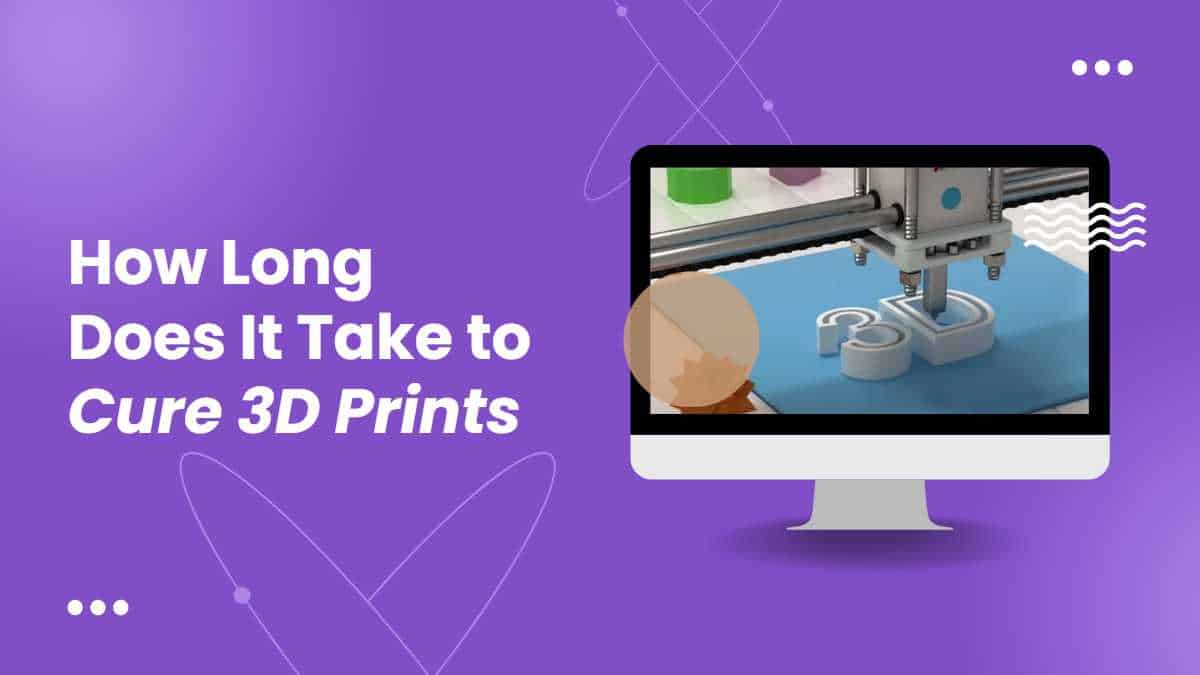How Long Does It Take to Cure 3D Prints?

Table of Contents
The time required to cure a 3D print depends on a few factors. Most 3D prints need curing before they become fit for use. People suggest different methods and time frames to cure these 3D prints.
Let's find out more about it.
Prime Day is finally here! Find all the biggest tech and PC deals below.
- Sapphire 11348-03-20G Pulse AMD Radeon™ RX 9070 XT Was $779 Now $739
- AMD Ryzen 7 7800X3D 8-Core, 16-Thread Desktop Processor Was $449 Now $341
- ASUS RTX™ 5060 OC Edition Graphics Card Was $379 Now $339
- LG 77-Inch Class OLED evo AI 4K C5 Series Smart TV Was $3,696 Now $2,796
- Intel® Core™ i7-14700K New Gaming Desktop Was $320.99 Now $274
- Lexar 2TB NM1090 w/HeatSink SSD PCIe Gen5x4 NVMe M.2 Was $281.97 Now $214.98
- Apple Watch Series 10 GPS + Cellular 42mm case Smartwatch Was $499.99 Now $379.99
- ASUS ROG Strix G16 (2025) 16" FHD, RTX 5060 gaming laptop Was $1,499.99 Now $1,274.99
- Apple iPad mini (A17 Pro): Apple Intelligence Was $499.99 Now $379.99
*Prices and savings subject to change. Click through to get the current prices.
What is the Duration Required for 3D Prints to Cure?
Generally speaking, most people claim that a 3D resin print only takes hardly five minutes if you cure it under a UV lamp. Further, if the 3D print is miniature, it would only take a minute to get cured. In the case of a larger-sized 3D print, it can take 3–5 minutes to cure.
However, these are all speculations or assumptions from different people. All these cures may take an hour or even more to recover properly. This entirely depends on the method, the size of the print, and the materials used during printing.
Moreover, it can take even a few hours to dry out completely if sunlight is used. With UV light, you will get a consistent light source, whereas, with sunlight, the clouds, or weather conditions in an open place will come into play and alter the time-lapse.
Which Method is the Most Effective to Cure 3D Prints?
An artificial UV light lamp is the most effective and consistent method of curing your 3D prints. It is more reliable and guarantees positive results than sunlight cure or any other method.
In addition, it would require only a few ways. The other methods may take an hour or even more, depending on their conditions.
Conclusion
There can’t be a fixed time-lapse to determine the cure of a 3D print. Different types of 3D images can require different periods depending on their material, size, conditions, or construction method. Therefore, we recommend best follow the manufacturer’s instructions as their guidelines will best help since they consider all factors in their advice.
